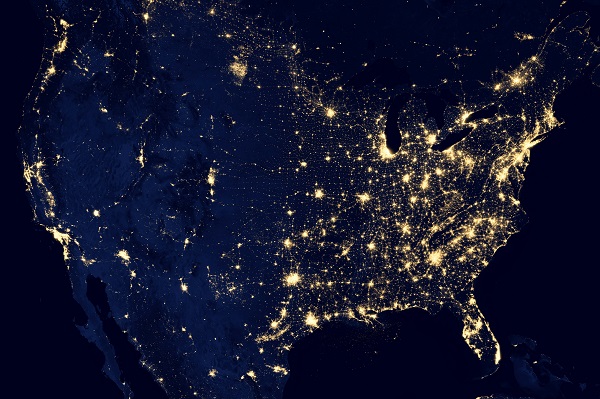COVID-19
Federal Court Judge Pulls Canada Back from the Brink
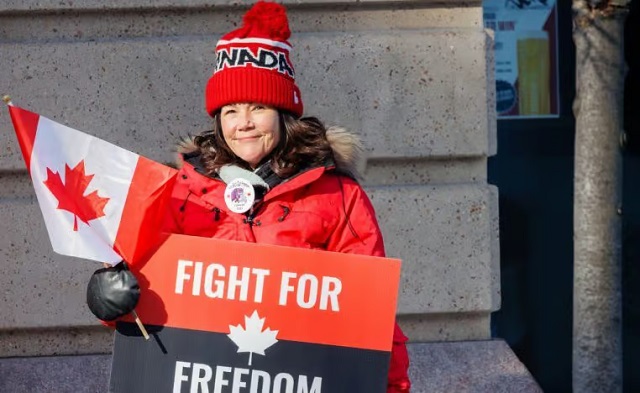
From the Brownstone Institute
BY
Trucks blocked border crossings in Coutts, Alberta and at the Ambassador Bridge in Windsor, Ontario. Local and provincial law enforcement dealt with those protests and cleared the borders.
The Canadian government’s use of the Emergencies Act was unlawful. The Trucker Convoy did not constitute a national emergency. So said a judge of the Federal Court. The decision may help to pull Canada back from the brink of authoritarian rule.
The Federal Court decision contains four conclusions. Two prerequisites for invoking the Emergencies Act, said Justice Richard Mosley, were not met. Moreover, the two regulations issued under it were unconstitutional. Predictably, the government has promised to appeal. For the government to prevail, an appeal panel would have to overturn all four. But there is a wrinkle, which I will get to momentarily.
Between 1963 and 1970, the Front de libération du Québec (FLQ), a separatist organization in Quebec, committed bombings, robberies, and killed several people. In October 1970, they kidnapped British trade commissioner James Cross, and then kidnapped and killed Pierre Laporte, a minister in the Quebec government. In response, Pierre Trudeau’s government invoked the War Measures Act, the only time it had been used in peacetime. In the years that followed, the invocation of the Act became regarded as a dangerous overreach of government powers and breach of civil liberties.
The Emergencies Act, enacted in 1988 to replace the War Measures Act, had higher thresholds. It was supposed to be more difficult for governments to trigger. Before Covid and the trucker convoy, it had never been used.
The Freedom Convoy arrived at Parliament Hill in Ottawa on January 29, 2022 to protest Covid vaccine mandates. The truckers parked unlawfully in downtown Ottawa. They violated parking bylaws and probably the Highway Traffic Act. Authorities could have issued tickets and towed the trucks away. But they didn’t.
In the meantime, protests in other parts of the country emerged. Trucks blocked border crossings in Coutts, Alberta and at the Ambassador Bridge in Windsor, Ontario. Local and provincial law enforcement dealt with those protests and cleared the borders. By February 15, when Justin Trudeau’s government declared a public order emergency and invoked the Emergencies Act, only the Ottawa protests had not been resolved.
The government issued two regulations under the Act. One prohibited public assemblies “that may reasonably be expected to lead to a breach of the peace.” The other outlawed donations and authorized banks to freeze donors’ bank accounts. On February 18 and 19, police brandishing riot batons descended on the crowd. They arrested close to 200 people, broke truck windows, and unleashed the occasional burst of pepper spray. By the evening of the 19th, they had cleared the trucker encampment away. Banks froze the accounts and credit cards of hundreds of supporters. On February 23, the government revoked the regulations and use of the Act.
Governments cannot use the Emergencies Act unless its prerequisites are met. A public order emergency must be a “national emergency” and a “threat to the security of Canada,” both of which are defined in the Act. A national emergency exists only if the situation “cannot be effectively dealt with under any other law of Canada.” “Threats to the security of Canada” can be one of several things. The government relied upon the clause that requires activities “directed toward or in support of the threat or use of acts of serious violence against persons or property for the purpose of achieving a political, religious or ideological objective.”
The trucker protests were neither a national emergency, Mosley concluded, nor a threat to the security of Canada.
There was no national emergency:
Due to its nature and to the broad powers it grants the Federal Executive, the Emergencies Act is a tool of last resort. [Cabinet] cannot invoke the Emergencies Act because it is convenient, or because it may work better than other tools at their disposal or available to the provinces.…in this instance, the evidence is clear that the majority of the provinces were able to deal with the situation using other federal law, such as the Criminal Code, and their own legislation…For these reasons, I conclude that there was no national emergency justifying the invocation of the Emergencies Act and the decision to do so was therefore unreasonable and ultra vires.
A threat to the security of Canada did not exist:
Ottawa was unique in the sense that it is clear that [Ottawa Police Services] had been unable to enforce the rule of law in the downtown core, at least in part, due to the volume of protesters and vehicles. The harassment of residents, workers and business owners in downtown Ottawa and the general infringement of the right to peaceful enjoyment of public spaces there, while highly objectionable, did not amount to serious violence or threats of serious violence…[Cabinet] did not have reasonable grounds to believe that a threat to national security existed within the meaning of the Act and the decision was ultra vires.
Nor were the regulations constitutional. The prohibition on public assemblies infringed freedom of expression under section 2(b) of the Charter of Rights and Freedoms. Empowering financing institutions to provide personal financial information to the government and to freeze bank accounts and credit cards was an unconstitutional search and seizure under section 8. Neither was justified, Mosley concluded, under section 1 of the Charter, the “reasonable limits” clause.
To prevail on appeal, the government would have to reverse all four conclusions. Justice Mosley did not make obvious errors of law. But there are a couple of odd bits. In particular, Mosley admits to doubts about how he would have proceeded had he been at the cabinet table himself:
I had and continue to have considerable sympathy for those in government who were confronted with this situation. Had I been at their tables at that time, I may have agreed that it was necessary to invoke the Act. And I acknowledge that in conducting judicial review of that decision, I am revisiting that time with the benefit of hindsight and a more extensive record of the facts and law…
Which brings us to the wrinkle. In April 2022, Richard Wagner, the Chief Justice of the Supreme Court of Canada, gave an interview to Le Devoir. Speaking in French, he characterized the protest on Wellington Street in Ottawa, where Parliament and the Supreme Court are located, as “the beginning of anarchy where some people have decided to take other citizens hostage.” Wagner said that “forced blows against the state, justice and democratic institutions like the one delivered by protesters…should be denounced with force by all figures of power in the country.” He did not mention the Emergencies Act by name. But his comments could be interpreted as endorsing its use.
The government’s appeal will go first to the Federal Court of Appeal but then to the Supreme Court of Canada. Its chief justice appears to have already formed an opinion about the dispute. Having made his public comments, the chief justice should announce that he will recuse himself from the case to avoid a reasonable perception of bias. That too would help bring Canada back from the brink.
COVID-19
Trump DOJ dismisses charges against doctor who issued fake COVID passports

From LifeSiteNews
Attorney General Pam Bondi has ended the federal prosecution of Dr. Michael Kirk Moore for giving ‘patients a choice when the federal government refused to do so.’
The Utah plastic surgeon who issued fake COVID-19 vaccine passports to help patients get around COVID vaccine mandates will no longer be prosecuted, U.S. Attorney General Pam Bondi announced Saturday.
During the COVID pandemic, Dr. Michael Kirk Moore Jr. and employees at his Salt Lake private practice developed a plan to provide patients who objected to being forced to take the vaccine with ineffectual, harmless saline injections instead and give them COVID vaccination cards that would satisfy (since rescinded) mandates to take the shot as a condition of employment, public facilities, mass gatherings, and more.
For his efforts, he was indicted for allegedly “endanger[ing] the health and well-being of a vulnerable population” and “undermin[ing] public trust and the integrity of federal health care programs.” The government also accused him of doing so for profit, but several sources attested off the record that Moore not only issued the cards for free but actually refused offers of compensation.
“They broke no laws and harmed no person,” the defendants’ legal team said in 2023. “Dr. Moore, specifically, abided by his long held Hippocratic oath to First Do No Harm. We believe he and his co-defendants will be found innocent of all charges.”
Last month, LifeSiteNews reported that Moore’s trial was set to begin on July 7, which could have potentially ended with him facing 35 years in jail and a $125,000 penalty. Supporters of the doctor had expressed worry that the change in presidential administration had not yet halted the prosecution.
Over the weekend, however, Bondi announced that at her direction it has now done exactly that.
“Dr. Moore gave his patients a choice when the federal government refused to do so,” she said. “He did not deserve the years in prison he was facing. It ends today.”
There is a large body of warning signs against the shots, which were developed in record time by the first Trump administration’s Operation Warp Speed initiative.
The federal Vaccine Adverse Event Reporting System (VAERS) reports 38,709 deaths, 221,030 hospitalizations, 22,331 heart attacks, and 28,966 myocarditis and pericarditis cases as of June 27, among other ailments. U.S. Centers for Disease Control & Prevention (CDC) researchers have recognized a “high verification rate of reports of myocarditis to VAERS after mRNA-based COVID-19 vaccination,” leading to the conclusion that “under-reporting is more likely” than over-reporting.
An analysis of 99 million people across eight countries published in the journal Vaccine “observed significantly higher risks of myocarditis following the first, second and third doses” of mRNA-based COVID vaccines, as well as signs of increased risk of “pericarditis, Guillain-Barré syndrome, and cerebral venous sinus thrombosis,” and other “potential safety signals that require further investigation.”
In April 2024, the U.S. Centers for Disease Control & Prevention (CDC) was forced to release by court order 780,000 previously undisclosed reports of serious adverse reactions, and a study out of Japan found “statistically significant increases” in cancer deaths after third doses of mRNA-based COVID-19 vaccines, and offered several theories for a causal link.
In January, a long-awaited Florida grand jury report on the COVID vaccine manufacturers found that while only a miniscule percentage of the millions of vaccinations resulted in serious harm based on the data it had access to, such events do occur, and there are “profound and serious issues” in pharmaceutical companies’ review process, including reluctance to share what evidence of adverse events they did find.
In May, Trump administration U.S. Food & Drug Administration (FDA) Commissioner Dr. Marty Makary and vaccine chief Dr. Vinay Prasad announced that there would no longer be blanket recommendations for all Americans to receive the shot, but the “risk factors” it would still be recommended for include asthma, cancer, cerebrovascular disease, chronic kidney diseases, a handful of chronic liver and lung diseases, diabetes, disabilities such as Down’s syndrome, heart conditions, HIV, dementia, Parkinson’s, obesity, smoking, tuberculosis, and more. Health & Human Services (HHS) Secretary Robert F. Kennedy Jr. subsequently announced COVID vaccines will not be recommended to healthy children or pregnant women.
The Trump administration has approved a new mRNA-based COVID-19 vaccine from Moderna, suggesting the federal government’s overall view of the shots will remain favorable, albeit without mandates of any kind. At the same time, it does require mRNA COVID shots to carry a new warning about the danger of heart damage in young men.
Business
Carney Liberals quietly award Pfizer, Moderna nearly $400 million for new COVID shot contracts
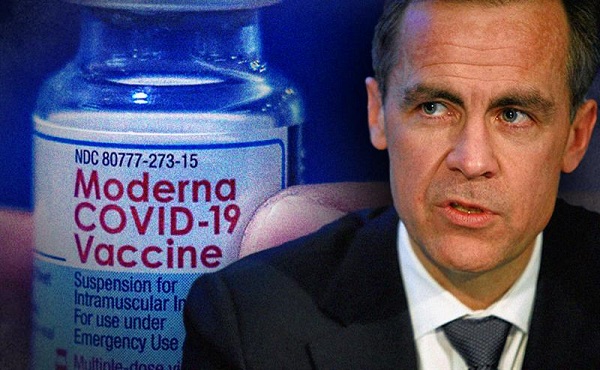
From LifeSiteNews
Carney’s Liberal government signed nearly $400 million in contracts with Pfizer and Moderna for COVID shots, despite halted booster programs and ongoing delays in compensating Canadians for jab injuries.
Prime Minister Mark Carney has awarded Pfizer and Moderna nearly $400 million in new COVID shot contracts.
On June 30th, the Liberal government quietly signed nearly $400 million contracts with vaccine companies Pfizer and Moderna for COVID jabs, despite thousands of Canadians waiting to receive compensation for COVID shot injuries.
The contracts, published on the Government of Canada website, run from June 30, 2025, until March 31, 2026. Under the contracts, taxpayers must pay $199,907,418.00 to both companies for their COVID shots.
Notably, there have been no press releases regarding the contracts on the Government of Canada website nor from Carney’s official office.
Additionally, the contracts were signed after most Canadians provinces halted their COVID booster shot programs. At the same time, many Canadians are still waiting to receive compensation from COVID shot injuries.
Canada’s Vaccine Injury Support Program (VISP) was launched in December 2020 after the Canadian government gave vaccine makers a shield from liability regarding COVID-19 jab-related injuries.
There has been a total of 3,317 claims received, of which only 234 have received payments. In December, the Canadian Department of Health warned that COVID shot injury payouts will exceed the $75 million budget.
The December memo is the last public update that Canadians have received regarding the cost of the program. However, private investigations have revealed that much of the funding is going in the pockets of administrators, not injured Canadians.
A July report by Global News discovered that Oxaro Inc., the consulting company overseeing the VISP, has received $50.6 million. Of that fund, $33.7 million has been spent on administrative costs, compared to only $16.9 million going to vaccine injured Canadians.
Furthermore, the claims do not represent the total number of Canadians injured by the allegedly “safe and effective” COVID shots, as inside memos have revealed that the Public Health Agency of Canada (PHAC) officials neglected to report all adverse effects from COVID jabs and even went as far as telling staff not to report all events.
The PHAC’s downplaying of jab injuries is of little surprise to Canadians, as a 2023 secret memo revealed that the federal government purposefully hid adverse effect so as not to alarm Canadians.
The secret memo from former Prime Minister Justin Trudeau’s Privy Council Office noted that COVID jab injuries and even deaths “have the potential to shake public confidence.”
“Adverse effects following immunization, news reports and the government’s response to them have the potential to shake public confidence in the COVID-19 vaccination rollout,” read a part of the memo titled “Testing Behaviourally Informed Messaging in Response to Severe Adverse Events Following Immunization.”
Instead of alerting the public, the secret memo suggested developing “winning communication strategies” to ensure the public did not lose confidence in the experimental injections.
Since the start of the COVID crisis, official data shows that the virus has been listed as the cause of death for less than 20 children in Canada under age 15. This is out of six million children in the age group.
The COVID jabs approved in Canada have also been associated with severe side effects, such as blood clots, rashes, miscarriages, and even heart attacks in young, healthy men.
Additionally, a recent study done by researchers with Canada-based Correlation Research in the Public Interest showed that 17 countries have found a “definite causal link” between peaks in all-cause mortality and the fast rollouts of the COVID shots, as well as boosters.
Interestingly, while the Department of Health has spent $16 million on injury payouts, the Liberal government spent $54 million COVID propaganda promoting the shot to young Canadians.
The Public Health Agency of Canada especially targeted young Canadians ages 18-24 because they “may play down the seriousness of the situation.”
-

 Fraser Institute1 day ago
Fraser Institute1 day agoBefore Trudeau average annual immigration was 617,800. Under Trudeau number skyrocketted to 1.4 million annually
-

 MAiD1 day ago
MAiD1 day agoCanada’s euthanasia regime is already killing the disabled. It’s about to get worse
-
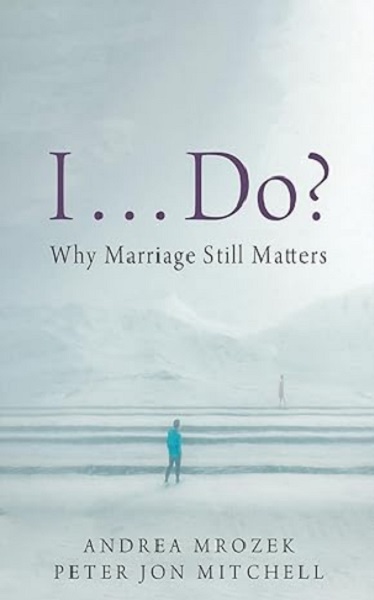
 Frontier Centre for Public Policy1 day ago
Frontier Centre for Public Policy1 day agoNew Book Warns The Decline In Marriage Comes At A High Cost
-

 Business1 day ago
Business1 day agoPrime minister can make good on campaign promise by reforming Canada Health Act
-

 Addictions1 day ago
Addictions1 day ago‘Over and over until they die’: Drug crisis pushes first responders to the brink
-

 International1 day ago
International1 day agoChicago suburb purchases childhood home of Pope Leo XIV
-
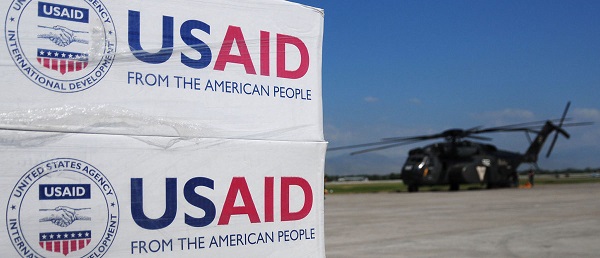
 Daily Caller1 day ago
Daily Caller1 day agoUSAID Quietly Sent Thousands Of Viruses To Chinese Military-Linked Biolab
-

 illegal immigration2 days ago
illegal immigration2 days agoICE raids California pot farm, uncovers illegal aliens and child labor




